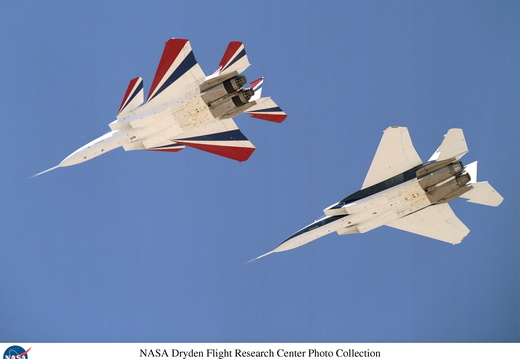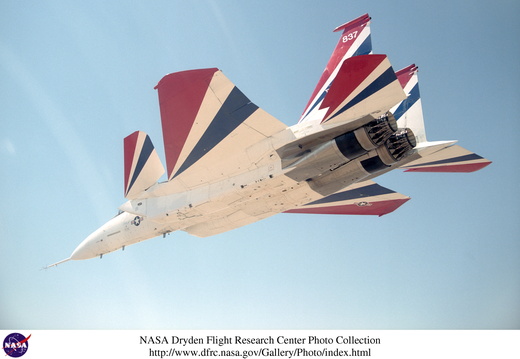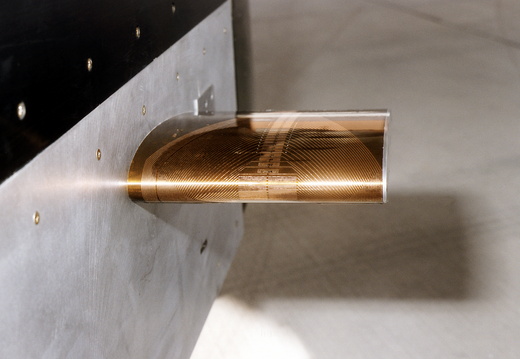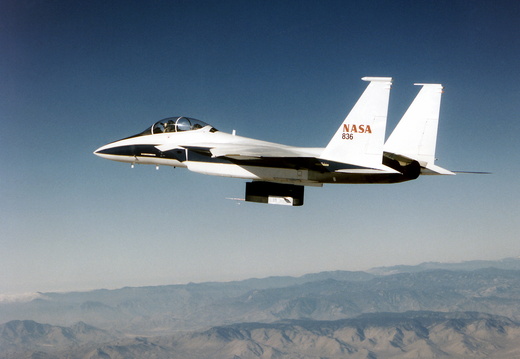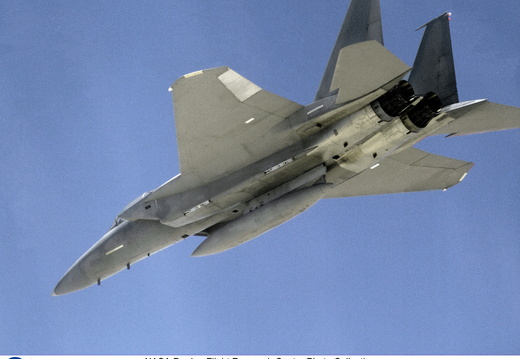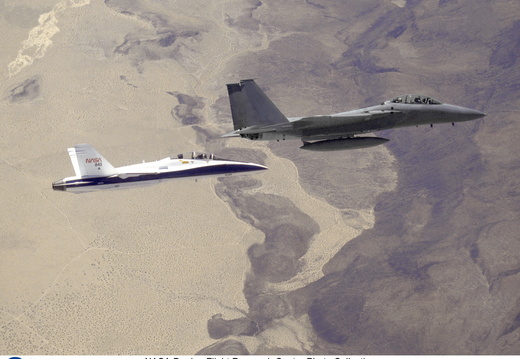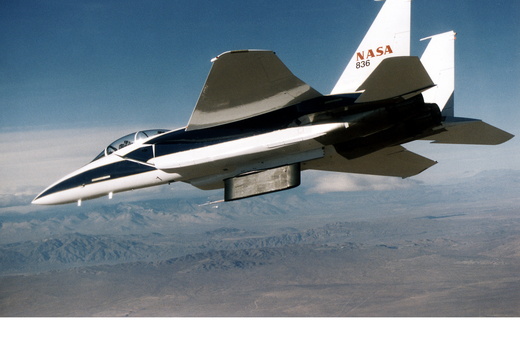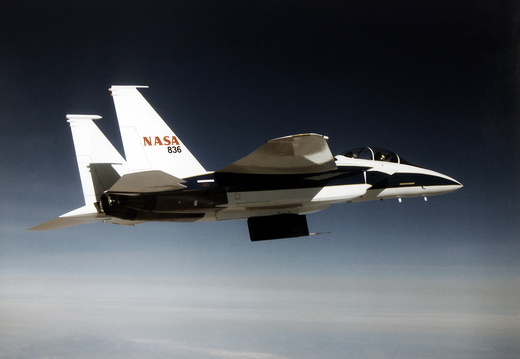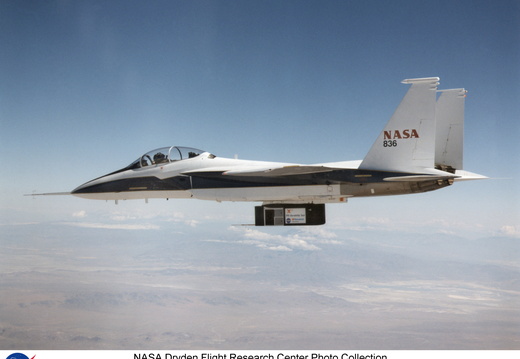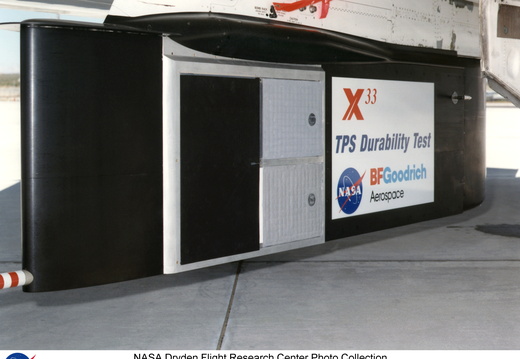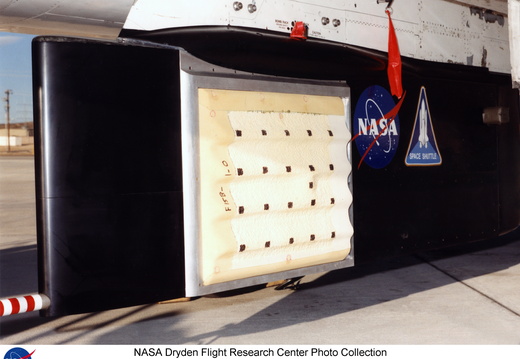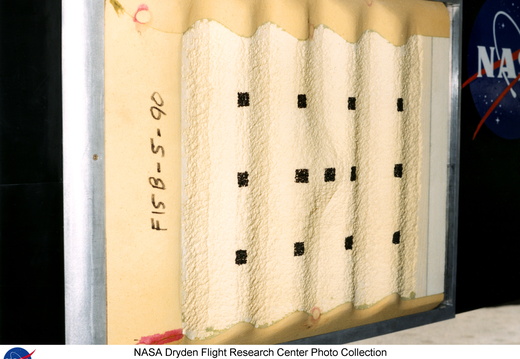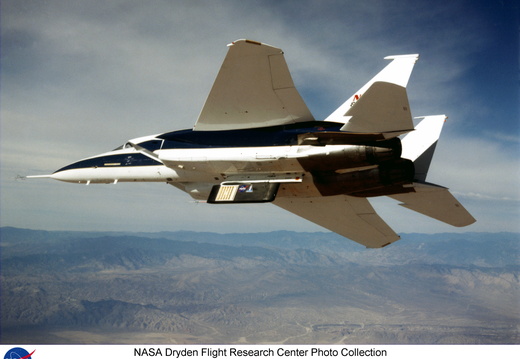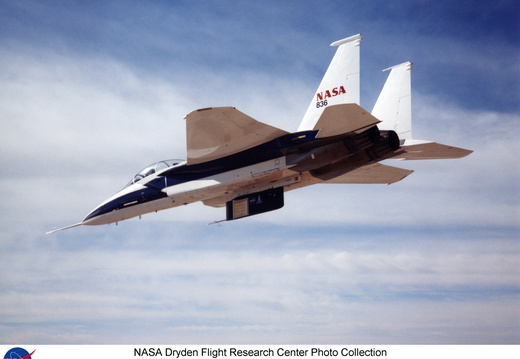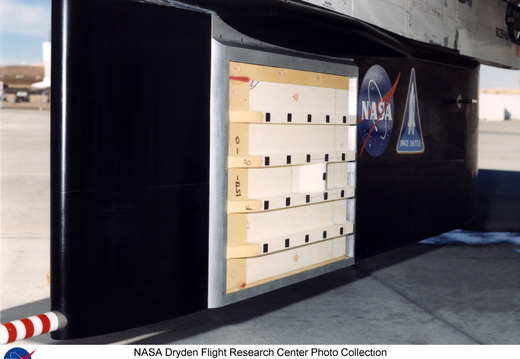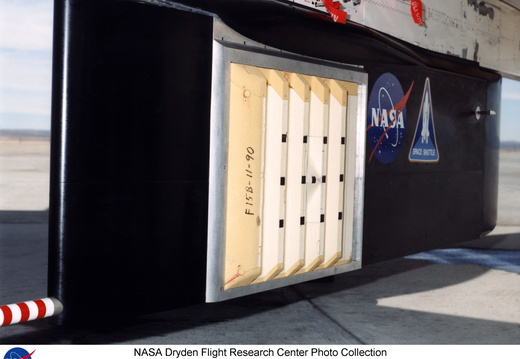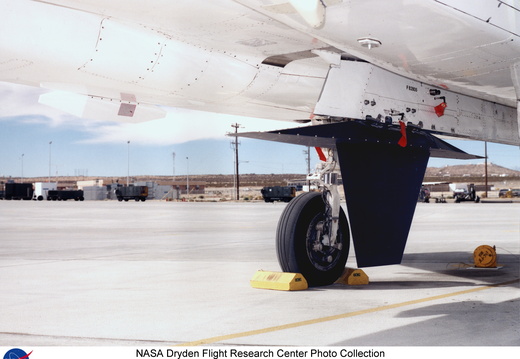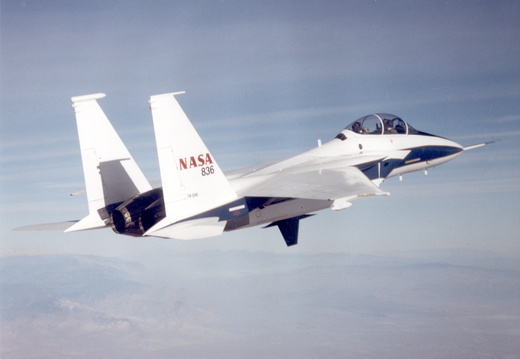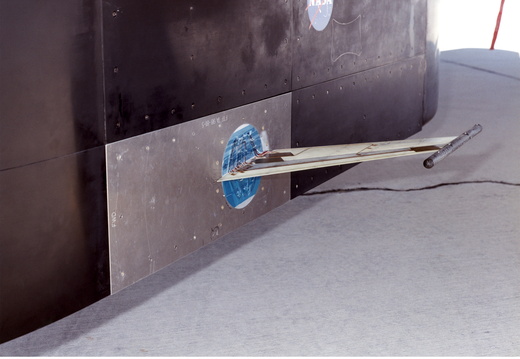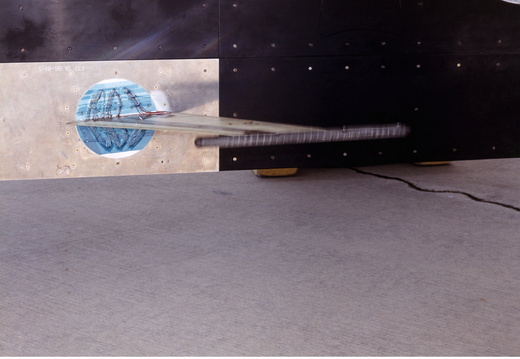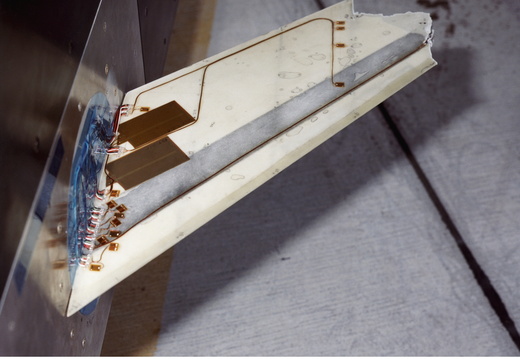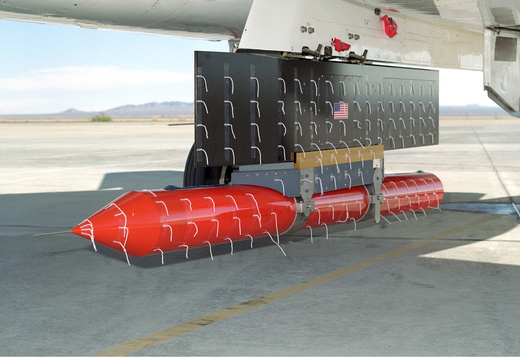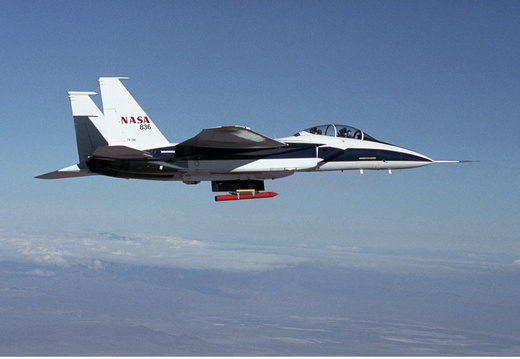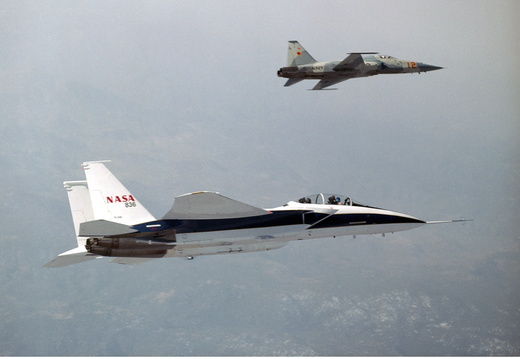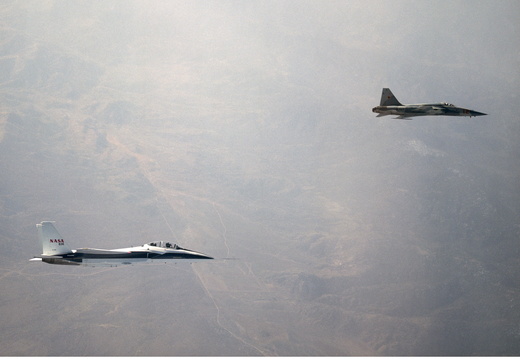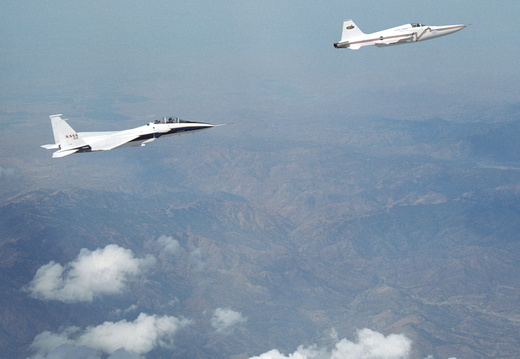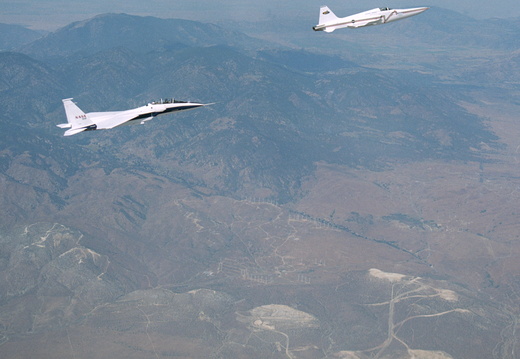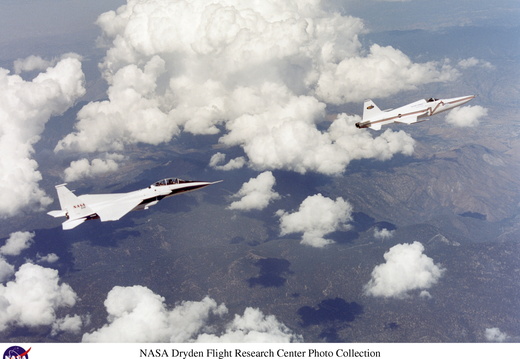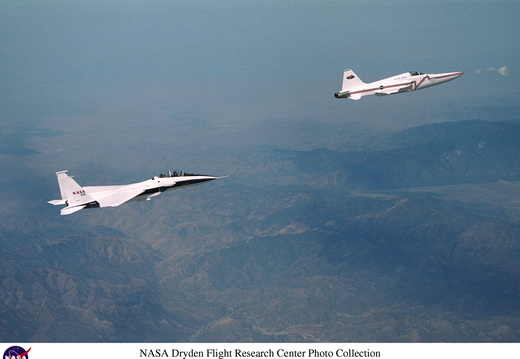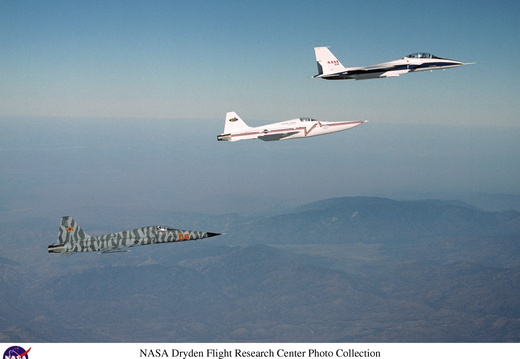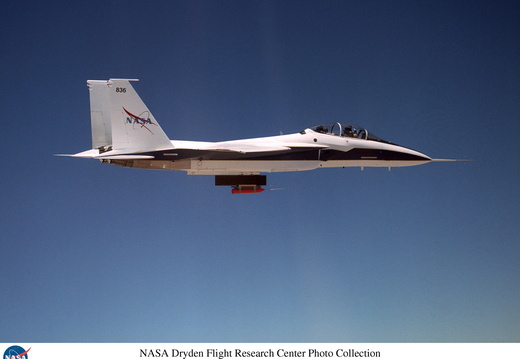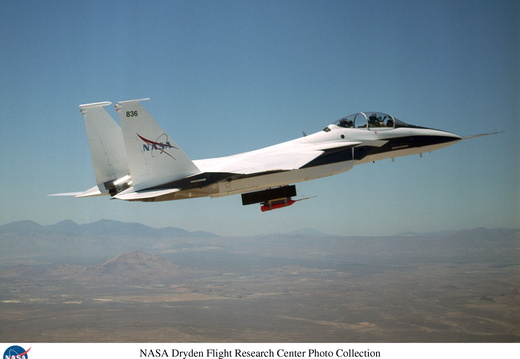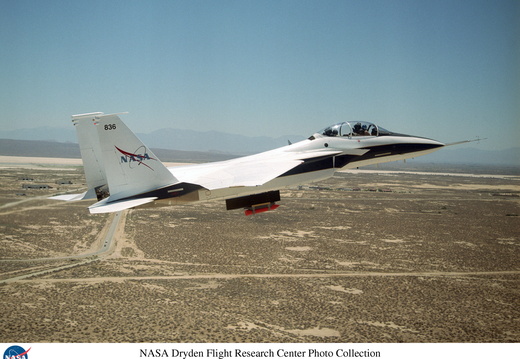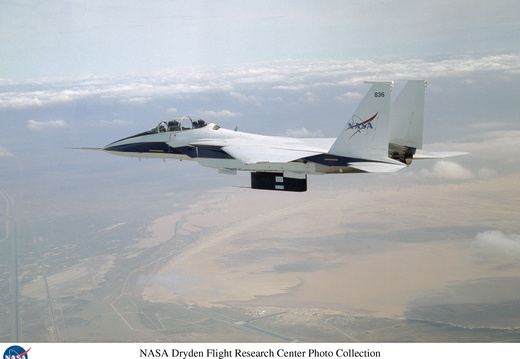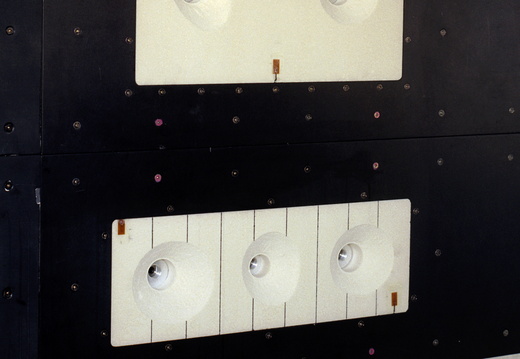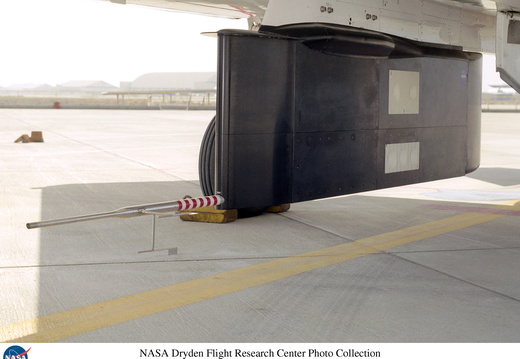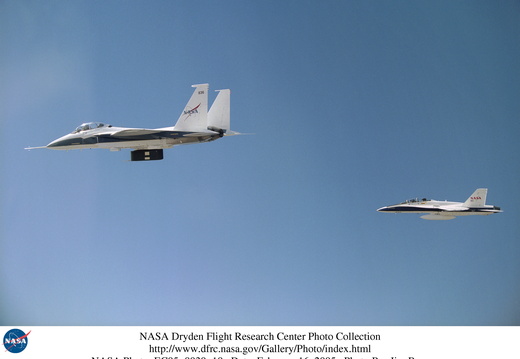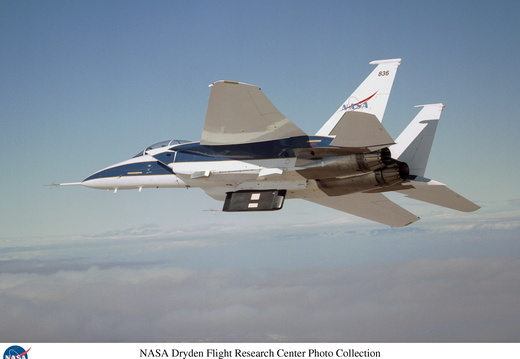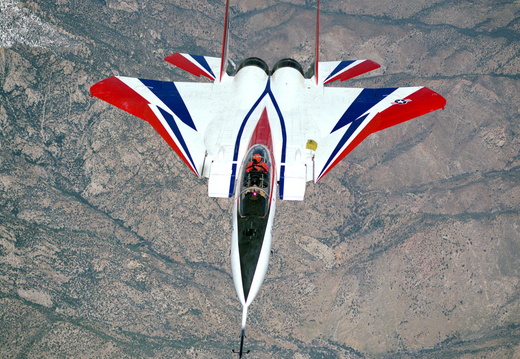
F-15ACTIVE
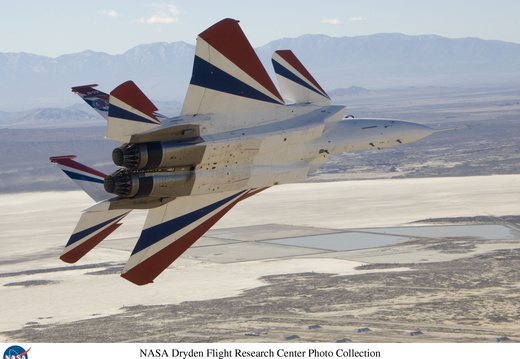
F-15B SBRDC/ECANS
NASA Dryden's highly modified NF-15B research aircraft served as the testbed for this project. NASA research pilot Jim Smolka and flight test engineer Mike Thomson flew a series of 13 flights over a four-month period from November 2006 through February 2007. The first half-dozen of these flights checked out new Ku-band phased array antennas and associated transceivers for the Range Safety and Range User Systems, while the remaining flights validated the Range Safety System. Both systems were linked between the aircraft, the NASA Tracking and Data Relay Satellite System (TDRSS), and test ranges at Dryden and White Sands in New Mexico, with data transmitted to Goddard Space Flight Center, Md. and Kennedy Space Center, Fla.
The range safety antennas installed on the aircraft also underwent antenna radiation pattern testing in the Benefield Anechoic Facility at Edwards Air Force Base to validate the actual flight data.
A space-based communications system using current satellite technologies could reduce operational costs of ground-based test range assets, and is applicable to a variety of manned and unmanned research aircraft and expendable space launch vehicles. The multi-center project was led by the Kennedy Space Center.
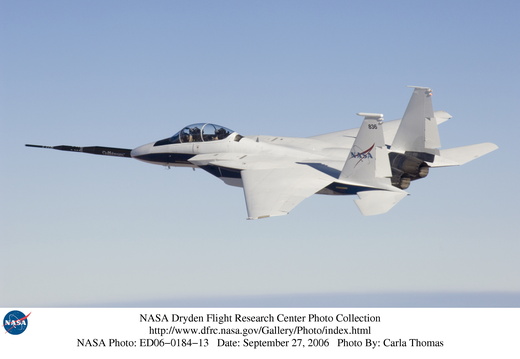
QUIET SPIKE
Made of advanced composite materials, the Quiet Spike weighed some 470 pounds and extended from 14 feet in subsonic flight to 24 feet in supersonic flight. Since March 2004, when Gulfstream was awarded a patent for the Quiet Spike, the device had been through extensive ground testing, including wind-tunnel testing, to arrive at the point where it was installed on an F-15B aircraft and flown. The F-15B is capable of flying at speeds in excess of Mach 2.0, or two times the speed of sound.
Once the Quiet Spike had proven to be structurally sound, it could be incorporated with confidence onto advanced low-boom configuration aircraft to further control and mitigate adverse acoustic impacts of supersonic flight. The hope was for the Quiet Spike to become an important means of changing the traditional N-wave sonic boom into smooth and more rounded pressure waves, shaped roughly like a sine wave or a sideways "S." This change in the wave shape resulted in a softer sound that is quieter than the Concorde sonic boom by a factor of 10,000.
